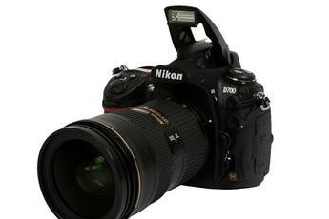 Many people like to use SLR cameras to take photos, but many ordinary people do not know how to maintain their own SLR cameras, the following small series will list a few SLR camera maintenance considerations 1, clean the lens only when necessary to the lens Clean it. A small amount of dust on the lens does not affect the image quality. When cleaning, remove dust with a soft brush and a blower. The fingerprints are very harmful to the lens coating and should be removed as soon as possible. When not in use, it is best to cover the lens cap to reduce the number of cleaning.
Many people like to use SLR cameras to take photos, but many ordinary people do not know how to maintain their own SLR cameras, the following small series will list a few SLR camera maintenance considerations 1, clean the lens only when necessary to the lens Clean it. A small amount of dust on the lens does not affect the image quality. When cleaning, remove dust with a soft brush and a blower. The fingerprints are very harmful to the lens coating and should be removed as soon as possible. When not in use, it is best to cover the lens cap to reduce the number of cleaning. 2. The thermal camera cannot be directly exposed to high temperatures. Do not forget the camera in a car that has been hot in the sun. If the camera has to be exposed to the sun (if you are on the beach), use a colored, sand-free towel or foil-covering tool to protect it from light. Do not use black tools because black will only absorb light, The situation is getting worse. 3. Keep the camera cool by keeping the camera in your pocket. Keep the camera at the right temperature and carry extra batteries. The camera may stop working at low temperatures, which is similar to warming up the car in cold weather. When you bring the camera from the cold zone to the warm zone, sweating often occurs. Therefore, you need to wrap the camera in a newspaper or plastic bag until the camera temperature rises to room temperature. In addition to sweating, dropping the camera from a cold temperature to a high temperature will cause the camera to appear some compression, which is of course not visible to the naked eye, but care must be taken not to change the camera's temperature suddenly.
4, waterproof, anti-fog and sand prevent the camera contact with water (especially salt water), dust and sand, so the camera box is very useful. Plastic bags are better at the beach. When shooting in fog or rain, cover the camera with a plastic bag and cut a small hole to allow the lens to come out to take pictures. Then seal the plastic bag with tape. Of course, you have to open a skylight so that you can operate the camera. Adding a skylight filter helps prevent fog and compression when it does not affect shooting.
5. Travel protection Use the lens cap to protect the lens, put the small devices and accessories in the bag and hands, and separate them with certain soft objects to ensure that they do not collide with each other. Especially vulnerable equipment should be covered with a soft layer. When flying, the metal detector is less destructive than the baggage detector. If necessary, manual inspections can be requested to minimize X-ray damage. 6. The camera must be kept away from gray layers and moisture. Among them, the camera bag or camera box is a very good preservation tool. Before the storage, the battery must be removed.
Outdoor Power Supply,Solar Lithium Battery,Portable Rechargeable Lantern,Power Solar Station Equipment
Sichuan Liwang New Energy Technology Co. , https://www.liwangnewenergy.com
